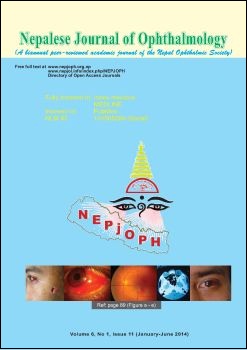Ocular injuries in the people’s uprising of April 2006 in Kathmandu, Nepal
DOI:
https://doi.org/10.3126/nepjoph.v6i1.10775Keywords:
rubber bullets, tear gas, ocular injuryAbstract
Introduction: In April 2006, the people of Nepal organised mass demonstrations demanding the restoration of democracy in the country. The ocular injuries that resulted during the riots that ensued, their pattern and the visual outcome of the injured have not yet been reported.
Objective: To study the demographic profile, type, severity and the visual outcome of ocular injuries that occurred during the 2006 people’s uprising in Nepal.
Subjects and methods: This was a retrospective interventional series of cases involving 29 subjects. The main outcome measures were demography, laterality of injury, type of injury and the visual status before and after the trauma.
Results: The age of the victims ranged from 14 to 32 years. Among the victims with eye injuries, 27 (93.1 %) were males, who were unemployed youth, students and construction workers. The left eye was injured more frequently than the right. Non-lethal bullets and explosive tear gas were the commonest agents of the major ocular injuries. The main types of injuries requiring hospitalization were closed globe injuries in eight victims and open globe in six. Surgical intervention was required in 57.2 % (n = 29) of the cases. The visual outcome was poor in cases of open globe injury with posterior segment involvement.
Conclusion: Non-lethal bullets and explosive tear gases can cause significant visual impairment. Severe open globe injury with a retained intra-ocular foreign body is associated with significant visual loss.
DOI: http://dx.doi.org/10.3126/nepjoph.v6i1.10775
Nepal J Ophthalmol 2014; 6 (2): 71-79
Downloads
Downloads
Published
How to Cite
Issue
Section
License
This license enables reusers to copy and distribute the material in any medium or format in unadapted form only, for noncommercial purposes only, and only so long as attribution is given to the creator.




